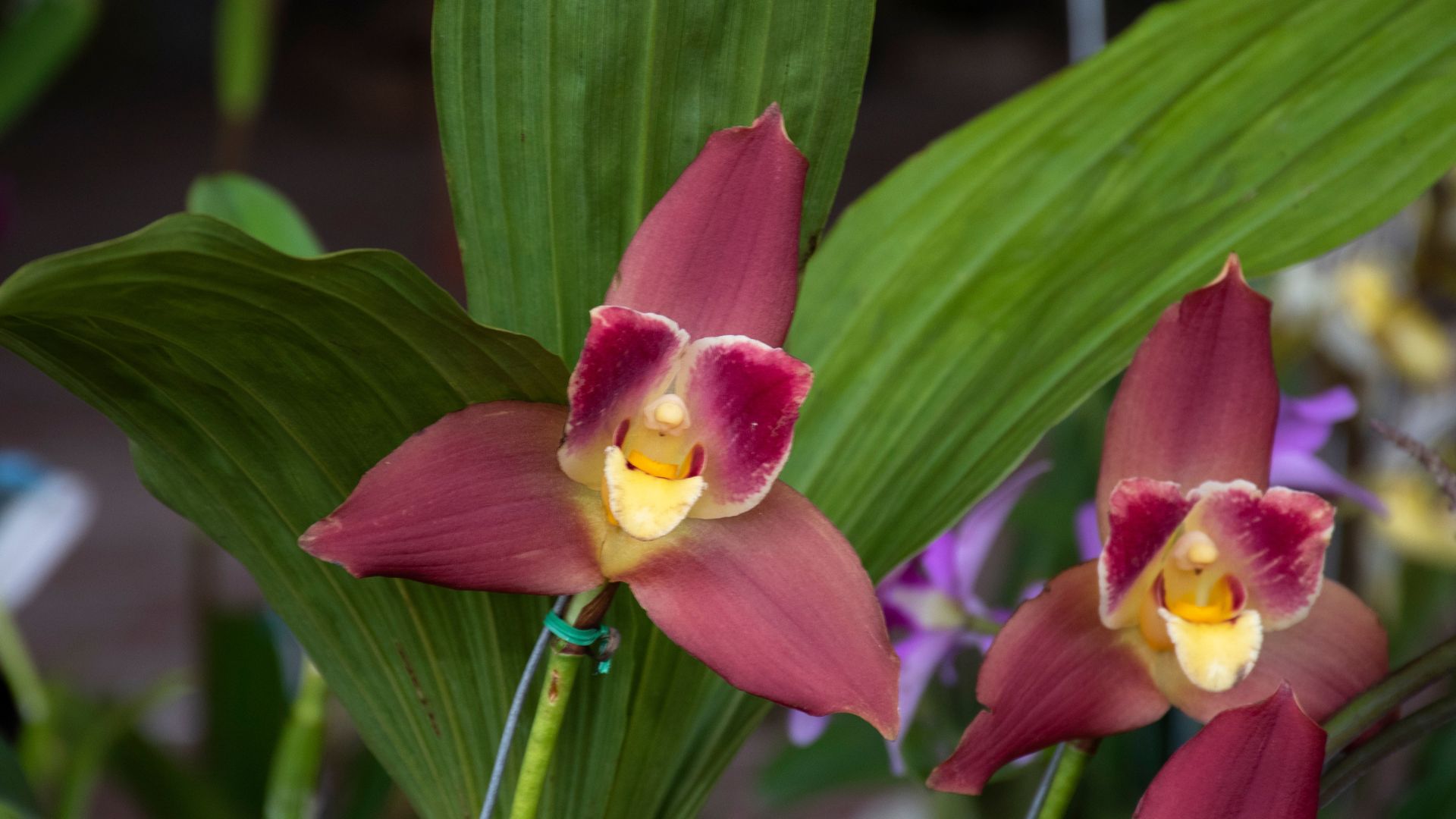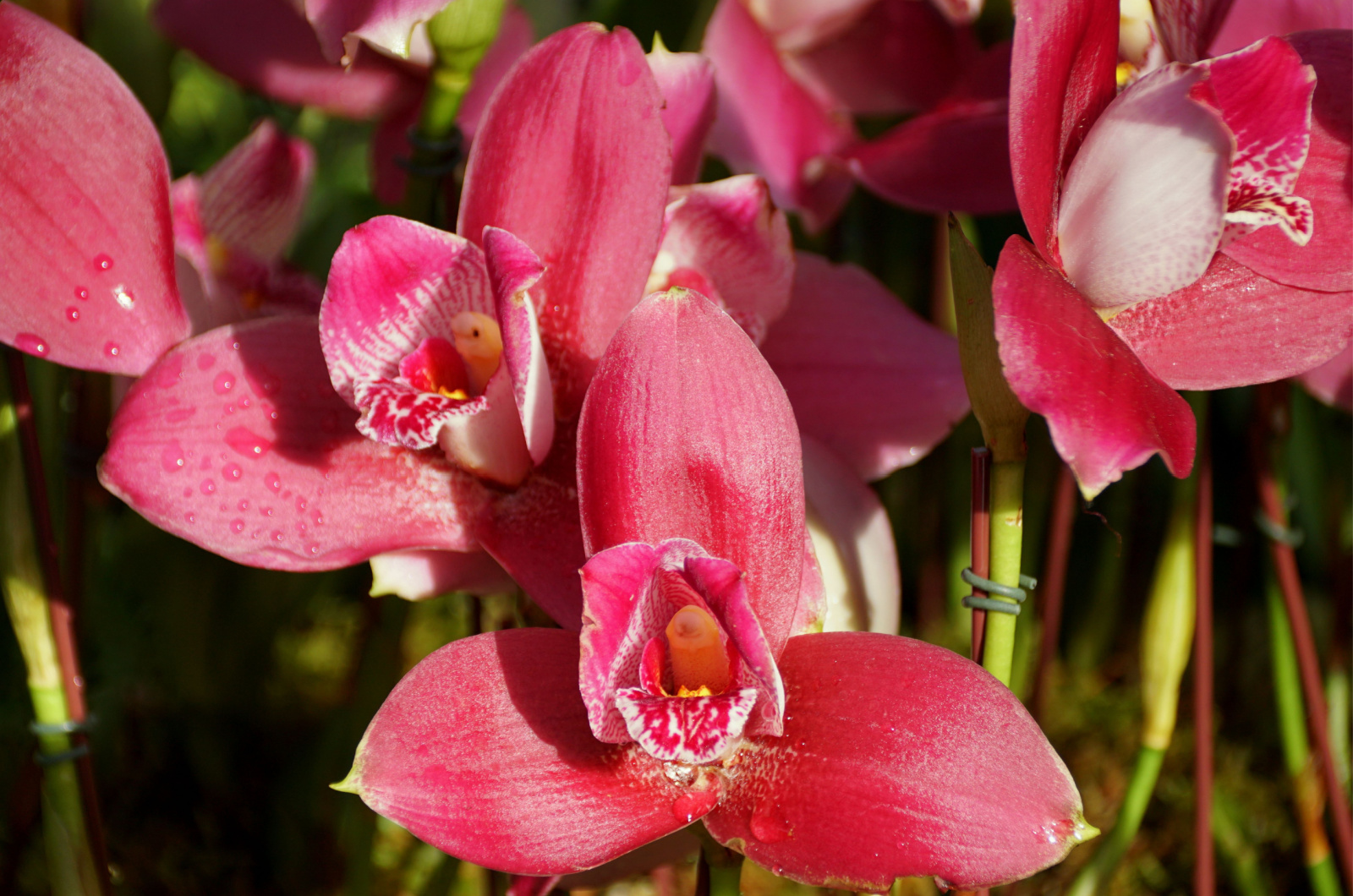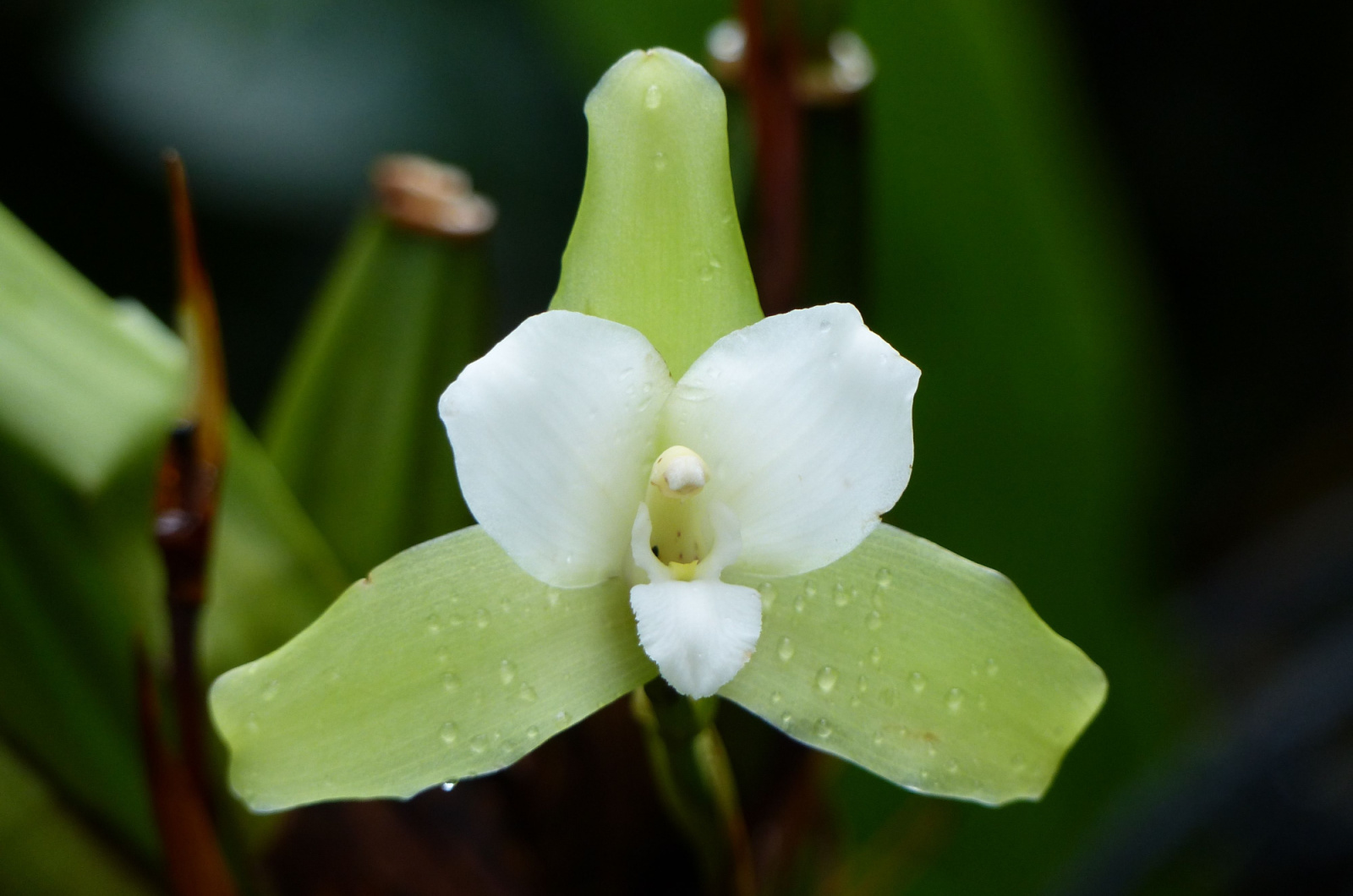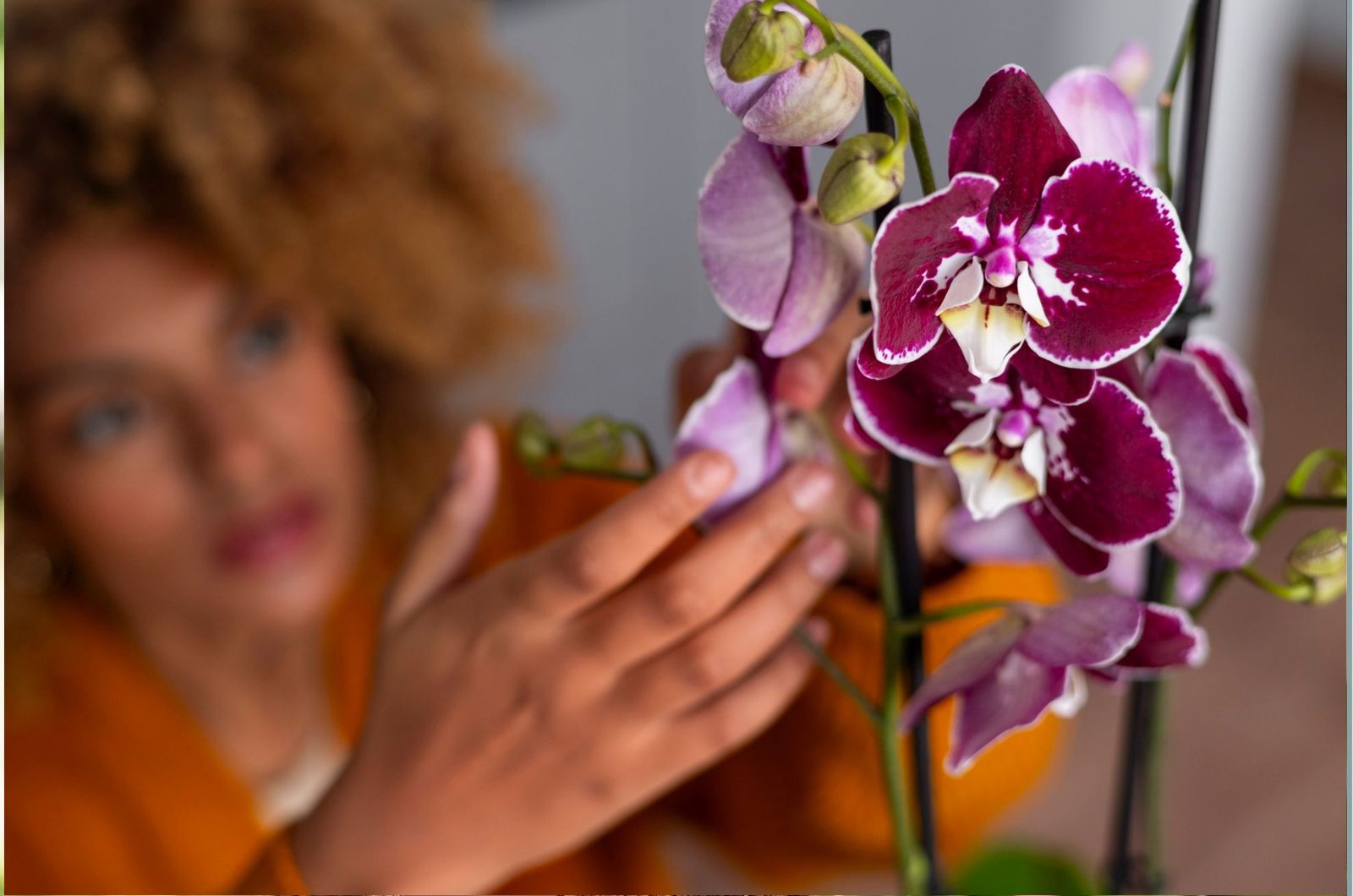If you want to grow orchids, or you already have some and want to expand your collection, I have a perfect species for you. Meet Lycaste orchids, captivating orchids renowned for their massive fragrant blossoms.
These orchids are becoming more and more popular and it’s not only because of their appearance, but also because of their low care requirements.
In this article, I’ll show you their features and how to grow and care for Lycaste orchids.
Let’s get started!
More About Lycaste Orchids
These orchids were first introduced in the 18th century and were named after the Trojan princess, Lycaste.
Although they’re considered native to Central America, some varieties can be found in the Andes and West Indies.
Similarly to other orchids, Lycaste species are mainly grown for their magnificent blossoms. What’s unique about them is the size and scent of the blooms that combine perfectly with triangular leaves that have a waxy texture.
These species are classified as sympodial epiphytes, which means that in their natural habitat they uptake the nutrients and water from the air.
Varieties To Select
There are more than 30 species within the Lycaste genus and they all look amazing. Here are my top picks.
• Lycaste macrophylla: This variety can grow up to 2 feet and is known for its extra large blooms. Believe it or not, each blossom can be up to 6 inches in diameter.
If you decide on macrophylla, you should know that its stems can break under the weight of the blossoms, so you’ll need to employ the staking technique.
• Lycaste tricolor: As the name suggests, the tricolor species generates blossoms that come in three colors, with red, green, and white the most common.
Compared to macrophylla, this variety generates smaller blossoms but you’ll get a larger number, which is a pretty good deal.
• Lycaste skinneri: Here comes the queen of the Lycaste orchids! Skinneri is appreciated for its splendid purely white blooms. It can reach up to 1 foot tall and it needs bright indirect light to survive.
• Lycaste aromatica: If you like fragrant plants, the aromatica variety is a perfect choice. It produces yellow blossoms that smell like cinnamon when they open.
Can You Grow Lycaste Orchids Outdoors
Lycaste orchids can be grown outdoors, but only in USDA hardiness zones 9 through 12. If you live in another climate, the only option is to keep these orchids indoors.
Deciduous Lycaste varieties can withstand slight changes in temperature, so you can keep them outdoors during warmer months.
Now let’s see what you should ensure for your Lycaste orchids to thrive!
Lycaste Orchid Growing Guide
These plants aren’t fussy over the growing conditions, unlike their cousins. However, you need to meet the basic requirements of your Lycaste orchids if you want to enjoy an abundance of healthy large blossoms.
Light Requirements
Bear in mind that the orchid light requirements may be different, depending on the variety you grow.
When it comes to Lycaste orchids, the deciduous species are accustomed to more light than the evergreen species.
You’ll need to ensure a lot of bright but indirect light for these species. Just make sure your deciduous orchids don’t receive any direct sunlight during the afternoon.
On the other hand, the evergreen species within the Lycaste genus tolerate lower light levels and will thrive in spots that receive about 60% shade.
Remember that light is essential and if there’s too little or too much light, your orchids may not bloom.
Watering Schedule
The watering needs of Lycaste orchids differ depending on the season. For instance, all species will need water approximately every three days during warmer months, i.e., spring and summer.
Orchid watering needs in winter are way lower; once the temperatures drop, you’ll need to cut back on watering your Lycaste orchids.
The easiest way to tell if any of your orchids lack water is by measuring the soil moisture content. If the surface of the growing substrate is dry, you can add some water.
Ideal Soil Type
Orchids don’t like when their roots stand in water for too long, so choosing a free-draining soil type is essential.
Even though Lycaste orchids are a bit hardier than other common orchids, they are still susceptible to root rot disease.
Never grow these varieties in compact soils; you can purchase a ready mix for orchids or make your own. Mixing orchid bark with perlite, pumice, and charcoal will ensure drainage and aeration and promote the healthy development of your Lycaste orchids.
Temperature And Humidity
If you grow the evergreen species of Lycaste orchids, you need to keep them at temperatures between 60 to 80 degrees Fahrenheit.
On the other hand, if you decide to grow deciduous species from the Lycaste genus, you should know that they can tolerate higher temperatures, up to 95 degrees Fahrenheit.
Both types of Lycaste orchids enjoy high humidity levels; you should keep humidity levels between 50 and 80%.
Fertilization
Lycaste orchids love food and you’ll need to fertilize them during the growing season with a nitrogen-rich fertilizer type.
The best method is to fertilize your orchids approximately twice a month during the spring and summer months.
Once the fall arrives, you can switch to fertilizers rich in phosphorus to promote growth in your Lycaste orchids.
Maintenance
Growers typically don’t prune their Lycaste orchids except to remove damaged, dead, or discolored plant parts.
When it comes to repotting these orchids, there’s no need to do it often. Give them plenty of space when potting them, putting the oldest pseudobulbs to the side of the planter.
How To Propagate Lycaste Orchids
You can propagate Lycaste orchids through seeds, but I honestly don’t recommend this because it takes too much time and work and the success rate isn’t really high.
The easiest way to propagate all sympodial orchids, including Lycaste species, is by division. This is a straightforward technique and you just need to cut through the rhizome and separate the clumps.
Common Issues
Lycaste orchids are easy to maintain compared to their cousins, but issues can occur.
Your orchids can die if you overwater them and grow them in a compact growing substrate. Root rot is the most common disease that affects Lycaste orchids.
Shriveling, wilting, and discolored leaves are just a few of the symptoms Lycaste species can display if overwatered.
Scale, aphids, spider mites, and mealybugs are some of the most common pests that can attack your Lycaste orchids. The easiest way to remove orchid pests is by applying rubbing alcohol.
Remember that proper care will help you avoid all issues in your Lycaste orchids. And best of all, you’ll be rewarded with an abundance of their gorgeous large blossoms!






